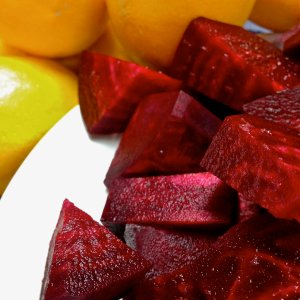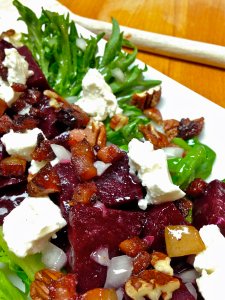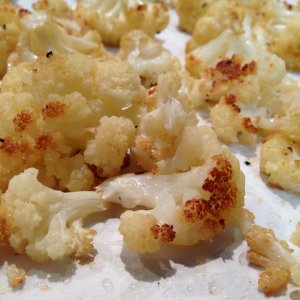
The Queen Beet
Ahhh, the beet. My first memories of the beet are not those fond memories my husband has of jars of super delicious, unforgettable pickled beets. My first memory of the beet, in any significant way, is chopping what seemed like a ridiculous quantity of industrial canned beets (ACME brand??) into a near-paste to put on the daily lunch salad of an elderly woman I took care of after high school. Ummm, no thanks. Fast-forward to 1998 when I met my husband, the beet-eater. Slowly but surely he, and beets, won me over.
So, now that a decade has passed and farm-to-table is popular again, it would seem as though the Queen Beet has been overdone when it comes to pairing with chèvre. Some form of this salad can be found just about everywhere. You’d think this would be a bad thing, but I’ve come to dearly love my little beet brethren and they’re super healthy to boot. I’m guilty of trying just about every iteration of this salad everywhere I eat. I’ve had a LOT of beets people. And this particular beet salad reigns as my fave. You’ve got caramelized beets, creamy chèvre, roasted pecans, lightly sweet vinaigrette, and diced salty hog jowl bacon that fries up like little meat croutons. Need I say more?

caramelized beets, creamy chèvre, roasted pecans, tangy vinaigrette, and crispy little hog jowl bacon croutons.
Best Beet and Chèvre Salad (serves 2-4)
For the Beets:
- 3 medium, or six small, washed (read: scrubbed), peeled, and wedged beets. Use the greens, if they’re still attached, to determine freshness. If they look like they’ve been sitting in a dumpster for 3 days, move on and find a more fresh source.
- 1 TBSP Extra Light Tasting Olive Oil for coating beets
- 1 TBSP raw, local honey
- 2 TBSP Extra Light Tasting Olive Oil
- 3 TBSP Balsamic Vinegar
- 1/4 tsp dried thyme
- Sea salt and cracked black pepper to taste (after beets cool)
For the rest of the salad:
- 1/2 cup pecan halves, coarsely chopped
- 4 ounces good chèvre (or make your own-a post coming soon about that!)
- about 6 handfuls of torn lettuce of your choosing (yes, that’s how I measure it-but it probably equals around 6 -8 loose cups!). I like oak lettuce for its mild flavor and tango lettuce for its texture (slightly curled leaves) and hint of spiciness-Boston, butter, and/or arugula would work too.
- 2 TBSP finely diced sweet or vidalia onion
- 1 cup diced hog jowl bacon (make sure you remove any tough skin-it doesn’t crisp well and ruins the texture as it’s a bit leathery).
For the rosé vinaigrette:
- 2 TBSP finely minced sweet or vidalia onions (use shallots or red onion for a bit more bite)
- 3 TBSP rosé wine vinegar (you know a post about making your own is coming!)
- 4 TBSP Extra Light Tasting Olive Oil or try substituting 3 TBSP with roasted pecan oil. For a much nuttier flavor you can add a couple of drops (seriously, it can over power easily) pumpkin seed oil.
- 2 TBSP rendered hog jowl bacon fat from frying
Preheat oven to 400 degrees. Lightly toss beet wedges in oil and arrange on parchment lined baking sheet. Roast for 20 minutes, flip with spatula, and roast 20 minutes more or so until a fork pierces with gentle pressure. Remove from oven and place in any pot or pan that will fit them, with enough room to stir gently, and place over medium heat. Add the 1 TBSP honey, 2 TBSP extra light tasting oil, 3 TBSP Balsamic, and thyme. Stir to coat. Give them a swirl every few minutes until the liquid is absorbed almost entirely and the beets are very dark purple.
As beets are on stove top, place diced bacon in a stainless or cast iron skillet and cook over medium-high heat, shifting frequently, until crispy on all sides (it will release its own fat for frying, plus some). Don’t forget to stir the beets! While those little meat croutons are cooking, gently roast pecan pieces in a dry pan over medium-low heat, stirring frequently until beginning to brown slightly. Arrrghhh-stir the beets! Remove salty, smoky little meat bits from pan with slotted spoon and drain on paper towels. Try not to eat too many. Remove nuts and set aside.
For the vinaigrette, place the vinegar, oil, jowl fat from frying, and onion in a flat-bottomed container that will accommodate the head of an immersion blender (a pint-sized Mason jar works well). After the ingredients settle, pulse blender about 6 or so times. Then, while intermittently pulsing, move the blender head upward, slowly incorporating more oil to the emulsion. And voila! you have a sweet-tangy rosé vinaigrette. Simple and tasty.
Arrange a couple of handfuls of lettuce on each plate. You’re making 4 salads, so each plate gets a fourth of all the items. Spoon the beets over the salad and sprinkle with diced onion and pecan pieces. Dot with pieces of goat cheese. Resist licking your fingers and eating more meat croutons. Toss some of the fried hog jowl bacon on top. Finish with a drizzle of the vinaigrette.
If you like beets you’ll love this-lightly sweet, tangy, smoky, salty, and earthy. If you don’t like beets, it just might convert you!



